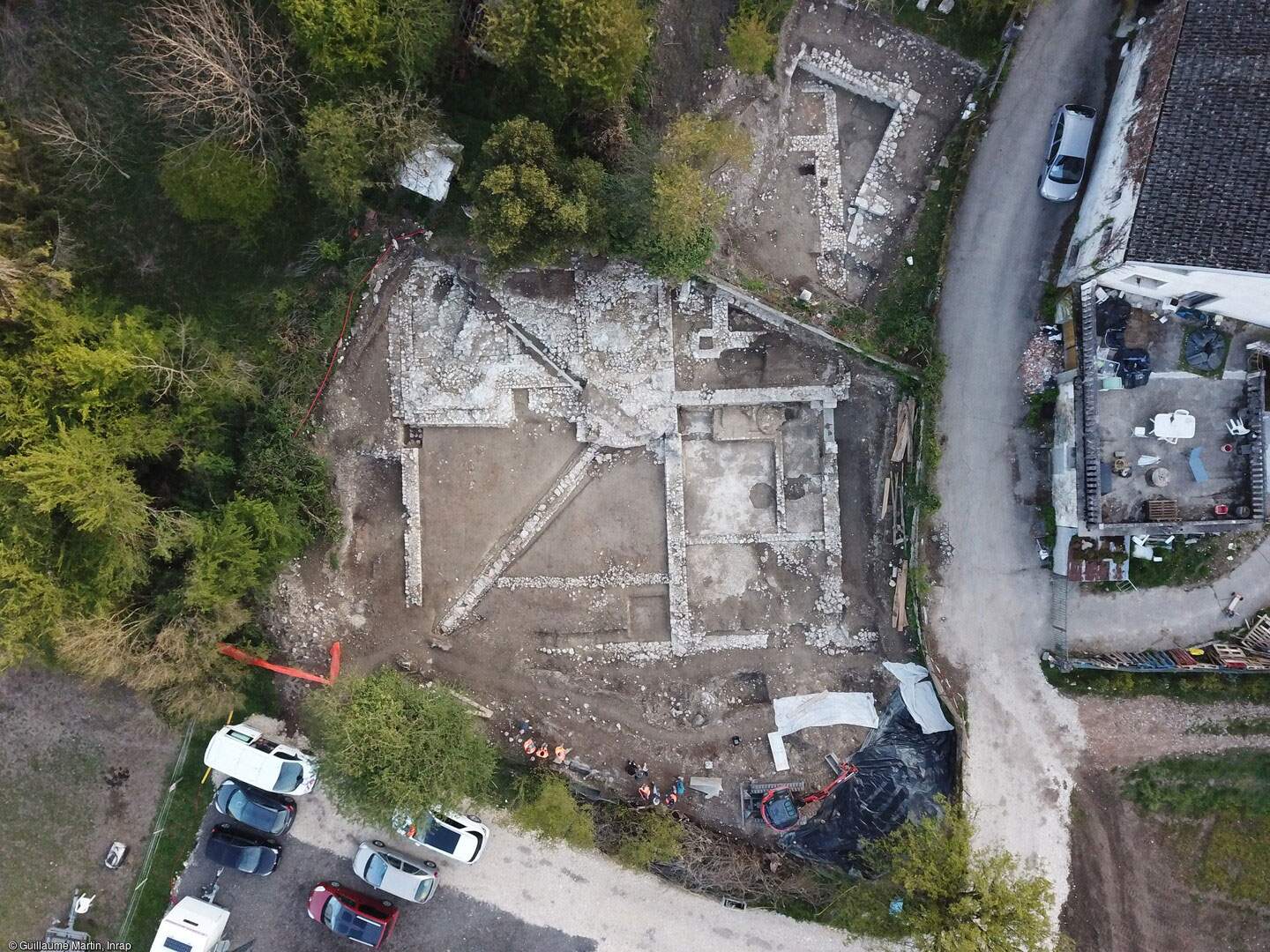France, a large spa complex from the 2nd century AD discovered in Savoy.
Important archaeological discovery in France, about 3 km northeast of the municipality of Yenne (Savoie), where during preventive archaeology excavations imposed by the Direction Régionale des Affaires Culturelles (DRAC, the counterpart of our superintendence) of Auvergne and Rhône-Alpes in view of the construction of a single-family house, a thermal complex from the 2nd century AD was discovered.C.: the DRAC, following a campaign of aerial photographs, had guessed that the presence of Roman buildings might emerge in the area, so in 2020 excavation of the entire plot concerned began. This operation revealed the existence of thermal baths occupied for at least a couple of centuries, until the site was abandoned at the end of the fourth century.
This bathhouse is located at the foot of the Jura massif, on the banks of the main bed of the Rhone. It lies in close proximity to a waterfall whose tufa (limestone rock) laden waters served to feed it, as evidenced by the deposits of aggregate against the walls of the hydraulic structures found. The use of white marble veined with gray and white to yellowish limestone seems to prevail without it being possible to determine whether these colors were already present in the original construction or whether they were used during the restoration of the rooms. The floor of at least one room is decorated with pinkish-white or red limestone tiles.
The site appears unevenly preserved. After abandonment, the complex was in fact probably used as a quarry for building materials. Moreover, as these baths were built on sloping terrain, if in its downstream section the walls were partially preserved from the colluvium coming from the hillside, in its upstream part only the underground structures, in this case the pool, the floors of the hypocausts (i.e., the bases of the heated rooms) and the foundations of the walls, remain.
The general plan makes it possible to propose establishing what the use of all the rooms brought to light was. The entire building can be divided into four quarters of comparable area. In the northern area of the site, the presence of some piles found denotes the presence of the heated rooms. The alignment of the three rooms observed at this location is common for this type of establishment: a warm room adjacent to a more temperate one, which gives access to a cold room. A vast basin with a pool function occupies the eastern area, while an open space, probably a garden, covers the western part.
Finally, a building with smooth concrete floors and walls covered with pictorial decorations coincides with the southern sector. The decorations are of two orders. The walls of one corridor are covered with a sober design (white background marked by red frames), while the walls of one of the two rooms retain traces of richer decoration. The study and reassembly of the collected fragments has not yet been carried out, but from an initial analysis they would appear to be black panels separated by red bands decorated with floral motifs. The function of these rooms remains more uncertain. While the checkroom hypothesis remains possible, the possibility of more ancillary functions (library, store, reserve) seems more appropriate.
During the 2nd - 4th centuries the bathhouse underwent a major restoration. If the functions of the rooms seem preserved, they gained in surface. Obviously, the paths between the different spaces appear to have been modified, and the pool was no longer in use.
The location chosen for these baths is most likely related to the buildings, including a probable fanum (temple) near it, but also to the supply of tufa-laden, naturally warmer water. Finally, the establishment is located not far from a well-known Rhone crossing area connected to the ancient town of Etanna (perhaps today’s Yenne), mentioned in the Peutingerian table.
 |
| France, a large spa complex from the 2nd century AD discovered in Savoy. |
Warning: the translation into English of the original Italian article was created using automatic tools. We undertake to review all articles, but we do not guarantee the total absence of inaccuracies in the translation due to the program. You can find the original by clicking on the ITA button. If you find any mistake,please contact us.




























